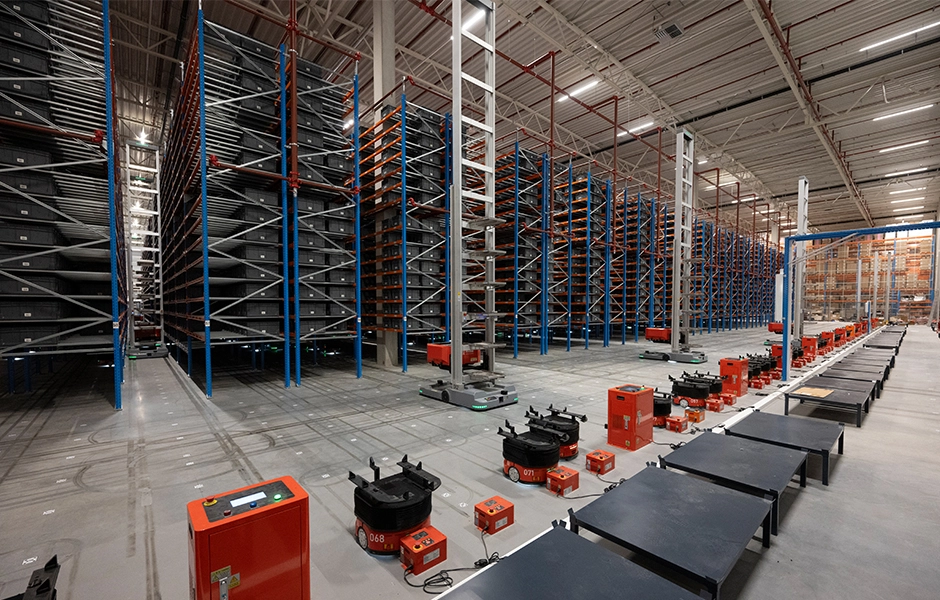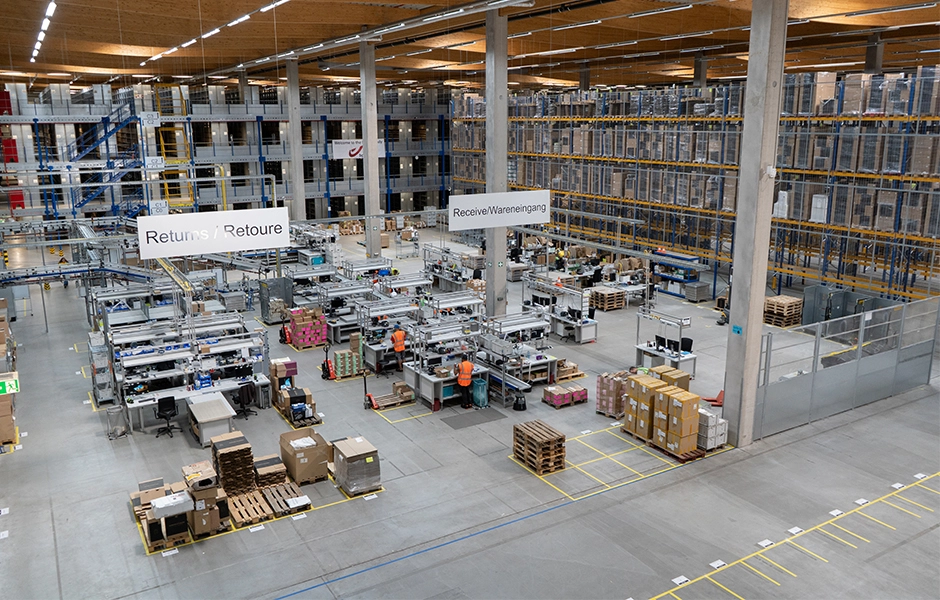The Dynamics of E-commerce Apparel Fulfillment

E-commerce has transformed the apparel industry, turning digital platforms into modern marketplaces for major fashion brands and indie boutiques. This shift impacts every step of the process, especially fulfillment, which is vital to the success of online fashion businesses.
The evolving landscape of e-commerce apparel
Traditional brick-and-mortar stores provide tactile experiences — feeling the fabric, trying on garments off the hanger, immediate purchases, and face-to-face customer service. However, e-commerce is rewriting the rules of shopping, and with it comes a new set of challenges and opportunities.
Digital platforms like Shopify offer an expansive reach, allowing customers from all corners of the world to shop with a mere click. But this extensive reach demands a robust and efficient system to ensure that from the moment a customer clicks “buy,” the garment finds its way to the customer’s closet smoothly.
Moreover, the instantaneous nature of online shopping has, over time, bred a culture of immediacy in consumer expectations. Where earlier customers were okay waiting weeks for a mail-order, today’s e-shoppers expect their purchases to be at their doorsteps in days, if not hours.

Significance of clothing fulfillment in ensuring a positive shopping experience
Fulfillment is not merely about delivering an item. It’s about delivering a promise, a world-class brand experience, right to the consumer’s doorstep. Here’s why:
- First Impressions: The unboxing experience is the first tangible interaction a customer has with an online brand. A delayed delivery, damaged item, or poor packaging can tarnish the brand’s image in the customer’s eyes.
- Loyalty & Retention: A smooth fulfillment process can enhance customer loyalty. If customers know they can rely on timely and efficient deliveries, they are more likely to shop again.
- Competitive Edge: In the highly competitive e-commerce apparel market, a seamless fulfillment process can differentiate a brand from its competitors.

The modern shopper’s expectations
The digital age has bred a new kind of consumer — one with high expectations, influenced by the rapid advancements in technology and the ever-improving standards of service.
- Speed and efficiency of delivery: Today’s shoppers expect fast deliveries, including next-day or same-day options. Brands failing to meet these demands risk losing customers to competitors who can.
- Sustainable and eco-friendly packaging options: As environmental awareness grows, consumers seek brands that reflect their values. For many, sustainable packaging is a necessity, not an extra. Prioritizing eco-friendly options is essential for attracting and keeping environmentally-conscious customers.
- Easy return and exchange policies: The inability to try on clothes before buying is one of the main drawbacks of online apparel shopping. As a remedy, brands must offer easy return and exchange policies. This not only builds trust but also ensures that customers are satisfied with their purchases.
- Transparent pricing: Transparent pricing for premium products and shipping rates is crucial. Hidden costs or surprise fees at checkout frustrate customers. Providing a clear breakdown of prices, including taxes and additional charges, fosters trust and ensures customers feel informed and appreciated.
Challenges in fashion fulfillment
Navigating the intricacies of fashion fulfillment presents a unique set of challenges. With an extensive array of apparel items, handling the multitude of SKUs can quickly become a daunting endeavor.
Handling diverse items, from delicate fabrics to sturdy footwear
Apparel e-commerce is unique due to the vast range of items that fall under its umbrella. From fragile silks, durable sportswear and soft t-shirts to robust leather boots, each item has its packaging, storing, and shipping requirements.
Delicate fabrics can get damaged if not handled with care, leading to returns and unhappy customers. On the other hand, heavier items like footwear require sturdier packaging and might incur higher shipping costs.
Proper training is required for warehouse staff to ensure they handle items appropriately. Moreover, the cost of specialized packaging for delicate items can add to operational costs.

Managing seasonal inventory surges
Keeping up with fashion trends requires anticipating stock needs, especially during peak seasons. Apparel e-commerce sees significant fluctuations based on seasons. Festivals, holidays, and fashion seasons can lead to sudden spikes in orders.
Seasonal surges require stocking up in advance, leading to high warehousing costs. There’s also the risk of overstocking or understocking, leading to wasted resources or missed sales opportunities.
Efficient inventory management becomes crucial during these times. Brands need to strike a balance to ensure they have enough stock to meet demand without wasting resources on overstocking.
Addressing the demand for “try-before-you-buy” services
As e-commerce evolves, consumers want the convenience of trying items at home before committing to purchase.
This service can lead to logistical challenges. Brands need to be prepared for a higher volume of returns and exchanges, which can strain the e-commerce fulfillment process and increase costs.
While this service can increase customer satisfaction and trust, it requires robust systems to handle returns efficiently and resell returned items without a significant loss.
Technology’s role in modern fulfillment
In the rapidly evolving landscape of fulfillment, technology stands as the linchpin, ensuring efficiency, accuracy, and adaptability. From integrating with e-commerce platforms to harnessing the power of AI, let’s explore how technology is reshaping the modern fulfillment process and setting new benchmarks for operational excellence.
Integration with popular e-commerce platforms for smooth operations
Seamless integration with e-commerce platforms ensures that order details are immediately communicated to the fulfillment center, accelerating the process.
- Benefits: Reduces the chances of errors, ensures quick order processing, and enhances customer satisfaction with timely deliveries.
Leveraging AI and analytics for inventory forecasting
AI can analyze past sales data, current market trends, and other relevant metrics to predict future demand.
- Benefits: Accurate forecasting means businesses can manage inventory more efficiently, reducing storage costs and minimizing the chances of stockouts or overstocking.

Automation at the Radial Europe Groningen site in the Netherlands
Automated sorting and packing systems for efficient order processing
Automation in the fulfillment process ensures that orders are picked and packed with precision and speed.
- Benefits: Faster order processing means quicker deliveries. Automation also reduces human error, ensuring that customers receive the correct items in perfect condition.

Sustainability in apparel fulfillment
In an age where the environmental impacts of businesses are under close scrutiny, e-commerce, particularly in apparel, has started its journey towards sustainability. This shift isn’t just ethically sound but is also becoming a crucial aspect in retaining environmentally conscious consumers.
- The push towards green packaging solutions: Plastic-based packing materials have raised environmental concerns. Apparel companies are turning to biodegradable or recyclable options, like minimalist designs to cut waste or sustainable materials such as cornstarch and mushroom roots, aiming to lower their carbon footprint.
- Efficient transportation methods to reduce carbon footprint: Transportation remains one of the major contributors to carbon emissions. By optimizing delivery routes, consolidating shipments, and switching to eco-friendly vehicles or fuels, apparel companies can significantly reduce their carbon footprint, ensuring the journey of a product from the warehouse to the consumer is as green as possible.
- Repurposing and recycling strategies for returned goods: Returns are inevitable in the world of e-commerce. Instead of letting returned items go to waste, companies are now focusing on recycling or repurposing these goods. Whether it’s by donating, recycling materials, or even upcycling, the goal is to minimize waste and maximize utility.

Radial Europe, returns area Halle Site, Germany
The returns conundrum
Efficient returns management is essential for retaining customer trust. But returns are both a challenge and an opportunity in e-commerce. While they can strain resources, handling them efficiently can significantly enhance customer loyalty.
With the inability to try products before purchase, online apparel shopping inherently has a higher return rate. A smooth, hassle-free return process can be the difference between retaining a customer and losing them to competitors.
Once an item is returned, it’s essential for businesses to quickly process, restock, or repurpose it to minimize losses. Efficient systems ensure that the product cycle doesn’t lag, keeping inventory and sales in optimal flow.

Enhancing customer experience
In the digital age, where physical interactions are minimal, curating an exceptional online experience becomes paramount.
- Branded Packaging: The unboxing experience can significantly influence a customer’s perception. Beautifully branded and unique custom packaging can leave a lasting impression.
- Thank You Notes: Personal touches, like a handwritten note, can make customers feel valued and appreciated.
- Communication Strategies: Keeping the consumer informed at every step, from order confirmation to delivery status, can build trust and reduce anxiety related to online shopping.
- Loyalty Programs and Exclusive Offers: By rewarding customers for their loyalty through exclusive discounts, points systems, or early access to sales, businesses can encourage repeat purchases and foster long-term relationships.
- Accurate labeling: Accurate labeling on products, detailing size, care instructions, and fabric information further helps in reducing return rates.

Why partner with experts?
Choosing the right 3PL partner or outsourced fulfillment provider is essential to navigate the fast-paced world of e-commerce apparel. Understanding your specific fulfillment needs and addressing them is what differentiates leading apparel fulfillment experts. Opt for specialized apparel fulfillment services that understand the intricacies of the fashion market.
In a fast-evolving industry, partnering with fulfillment experts can greatly enhance operations. Their deep understanding of apparel logistics and proven practices ensures efficient, cost-effective management across warehousing, inventory, order processing, and returns.
Conclusion
To succeed in today’s competitive apparel market, businesses must focus on fulfillment, leverage emerging trends, adopt technology, and embrace sustainable practices.
We invite e-commerce retailers to reach out to our team of experts to discover how you can optimize your apparel fulfillment process. Stay at the forefront of industry advancements and provide your customers with the seamless experience they deserve. Why not contact us today to unlock the potential of your e-commerce business.
Contact Us (EUR)
By submitting this form, you agree to our friendly privacy policy.
